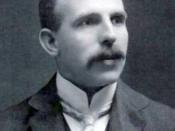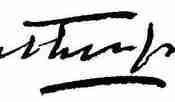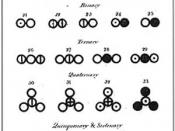*History of Atomic Theory- Democritus
The theory of atoms began with a Greek philosopher called Democritus who lived in the 5th century BC. Democritus was not the first to develop an atomic theory but he produced a much more elaborate and systematic view of the physical world than his forerunners. He developed a theory of matter that wasn't based on evidence from experiments but on philosophical knowledge and ideas.
Democritus claimed that space, or the Void existed. He envisioned that this Void was an infinite space in which moved an infinite number of atoms that made up the physical world. These atoms, he claimed were eternal and invisible; extremely small that their size could not be reduced; absolutely full and incompressible, as they have no pores and entirely fill the space they occupy; and homogeneous, the only difference being shape, arrangement, position and magnitude.
Based on this theory of the physical world, Democritus could explain all the changes in the world as changes in motion of atoms, or changes in the way they were packed together.
This theory tried to explain the whole of physics with only the basis of Democritus' philosophical ideas.
*The Modern Atomic Theory
In 1803, British chemist John Dalton developed the first useful atomic theory of matter, transforming Democritus' theory into a scientific theory. He unveiled some of the first clues about the true nature of atoms. Dalton studied how quantities of different elements, when combined make other substances. Eg hydrogen and oxygen makes water.
The main ideas of Dalton's atomic theory are:
1)All matter is made of atoms. Atoms are indivisible and indestructible.
2)All atoms of a given element are identical in mass and properties.
3)Compounds are formed by a combination of two or mire different kinds of atoms.
4)A chemical reaction is...


